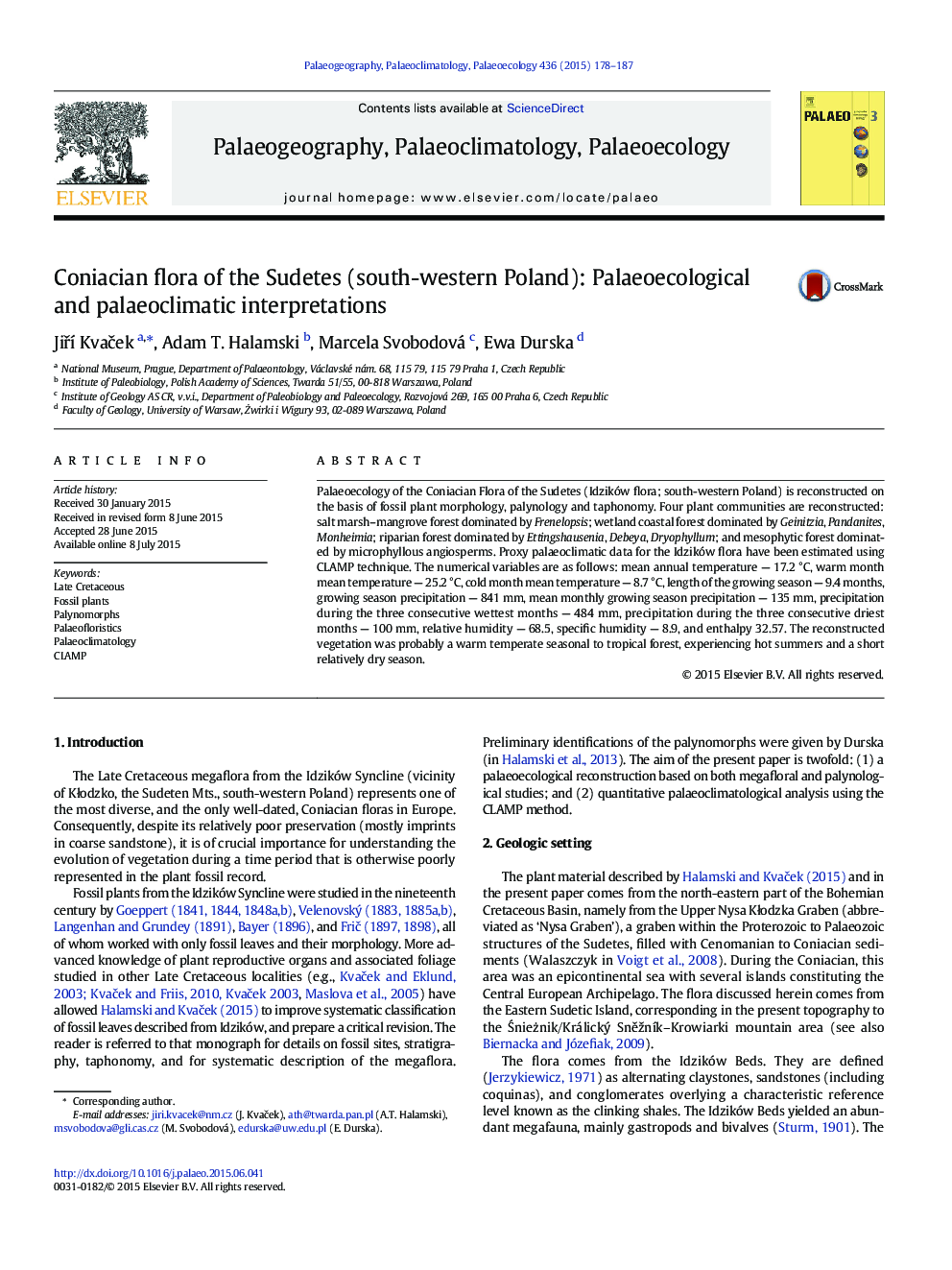| Article ID | Journal | Published Year | Pages | File Type |
|---|---|---|---|---|
| 4465904 | Palaeogeography, Palaeoclimatology, Palaeoecology | 2015 | 10 Pages |
•Palaeoecology is reconstructed based on fossil plant morphology, palynology and taphonomy.•Proxy palaeoclimatic data are based on CLAMP.•Plant communities are defined including mangrove, wetland, riparian and mesophytic forests.•Fossil vegetation is reconstructed as a seasonal warm temperate to tropical forest.
Palaeoecology of the Coniacian Flora of the Sudetes (Idzików flora; south-western Poland) is reconstructed on the basis of fossil plant morphology, palynology and taphonomy. Four plant communities are reconstructed: salt marsh–mangrove forest dominated by Frenelopsis; wetland coastal forest dominated by Geinitzia, Pandanites, Monheimia; riparian forest dominated by Ettingshausenia, Debeya, Dryophyllum; and mesophytic forest dominated by microphyllous angiosperms. Proxy palaeoclimatic data for the Idzików flora have been estimated using CLAMP technique. The numerical variables are as follows: mean annual temperature — 17.2 °C, warm month mean temperature — 25.2 °C, cold month mean temperature — 8.7 °C, length of the growing season — 9.4 months, growing season precipitation — 841 mm, mean monthly growing season precipitation — 135 mm, precipitation during the three consecutive wettest months — 484 mm, precipitation during the three consecutive driest months — 100 mm, relative humidity — 68.5, specific humidity — 8.9, and enthalpy 32.57. The reconstructed vegetation was probably a warm temperate seasonal to tropical forest, experiencing hot summers and a short relatively dry season.
